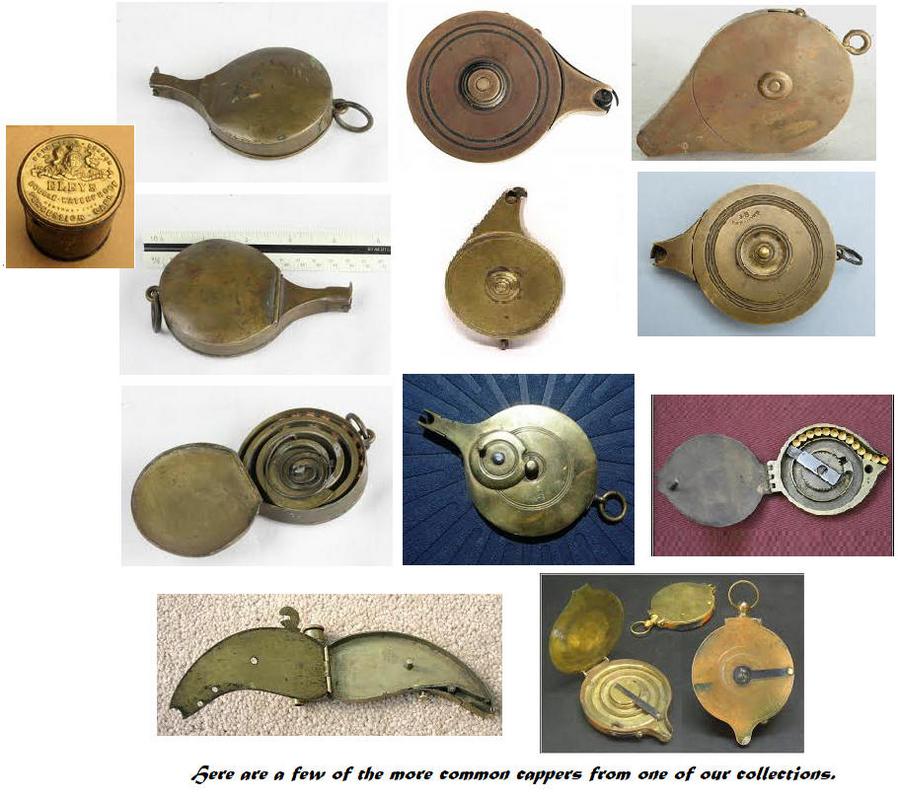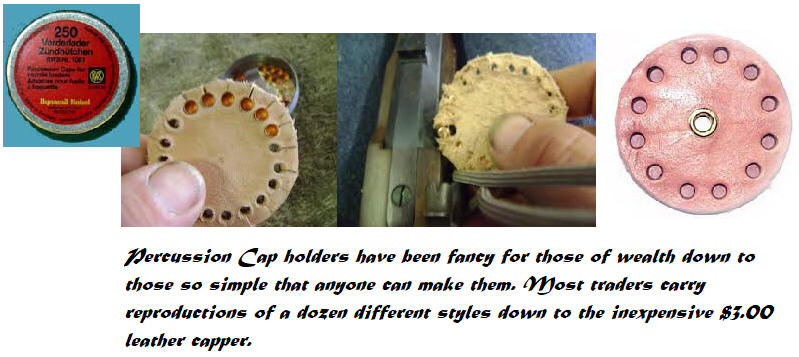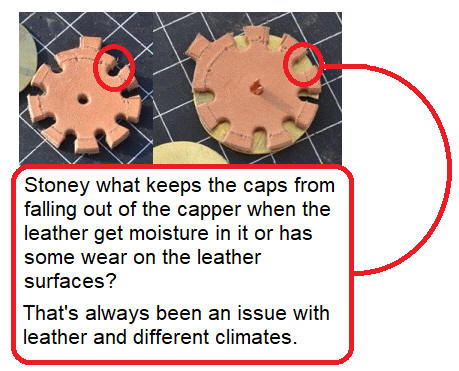Howdy folks: Two Feathers here.
I apologize for the disruption in this rotary capper tutorial, but between my absentmindedness and a few other things, I lost track of what I was doing. I wasn’t sure if anyone really wanted to know how to make one of these, but after some contact with a few forum members, I was told that they do want to see how it’s done. So here we go! This is my take on it, so if you have a better idea please let me know.
I hope you can see the 2 different circles I’ve scribed into my 9 oz. scrap leather? The outer circle measures 1-1/2” in diameter, 1.5” for you machinist types. The inner circle measures 1.200”. I think to make it easier for folks without micrometers or digital calipers, you could get away with 1-3/16”? Anyway… there’s a small tab or ear on the outer circle. That has to be there, so don’t cut it off when you do the next step. After I get a little farther ahead, I’ll have more of this tutorial for you. If you have any questions or comments, just email me, [email protected]
Again, my apologies for the delay.
God bless:
Two Feathers
At The Mountain Man Emporium

I apologize for the disruption in this rotary capper tutorial, but between my absentmindedness and a few other things, I lost track of what I was doing. I wasn’t sure if anyone really wanted to know how to make one of these, but after some contact with a few forum members, I was told that they do want to see how it’s done. So here we go! This is my take on it, so if you have a better idea please let me know.
I hope you can see the 2 different circles I’ve scribed into my 9 oz. scrap leather? The outer circle measures 1-1/2” in diameter, 1.5” for you machinist types. The inner circle measures 1.200”. I think to make it easier for folks without micrometers or digital calipers, you could get away with 1-3/16”? Anyway… there’s a small tab or ear on the outer circle. That has to be there, so don’t cut it off when you do the next step. After I get a little farther ahead, I’ll have more of this tutorial for you. If you have any questions or comments, just email me, [email protected]
Again, my apologies for the delay.
God bless:
Two Feathers
At The Mountain Man Emporium















